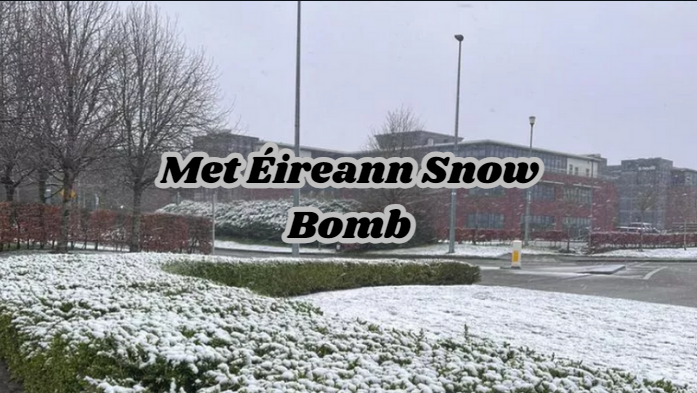Introduction
Met Éireann, Ireland’s national meteorological service, has occasionally issued warnings about an impending “snow bomb,” a term that garners significant public and media attention. This article delves into the science behind the term, its effects, and how to prepare for such extreme weather events.
What is a Snow Bomb?
A snow bomb, though not an official meteorological term, refers to a sudden and severe snowfall caused by a rapid drop in atmospheric pressure. This phenomenon often results from explosive cyclogenesis, commonly known as a “weather bomb.” When cold Arctic air meets warm air from the Atlantic, it creates intense low-pressure systems, leading to heavy snowfall, strong winds, and plummeting temperatures.
The Science Behind Explosive Cyclogenesis
This rapid intensification leads to a powerful storm, often accompanied by:
- Heavy Snowfall: Thick snow blankets large areas, disrupting transportation and daily activities.
- Strong Winds: Gale-force winds exacerbate the cold and create dangerous conditions like blizzards.
- Cold Spells: Temperatures drop significantly, leading to frost and icy conditions.
Also Read: Met Éireann 5-Day Forecast
Historical Snow Bomb Events in Ireland
Here are some examples:
The Big Freeze of 2010
The winter of 2010 saw one of Ireland’s most severe cold spells in decades. Sub-zero temperatures combined with heavy snowfall disrupted travel and caused widespread power outages.
Storm Emma in 2018
Storm Emma brought a significant snow bomb to Ireland, with snowdrifts as high as two meters in some areas. The “Beast from the East” combined with this storm to create chaos, shutting down schools, businesses, and transport networks.
Impact of a Snow Bomb
The effects of a snow bomb are far-reaching, affecting various aspects of daily life:
Transportation Disruption
Snow-covered roads and icy conditions make travel hazardous. Airports, railways, and bus services often face delays or cancellations.
Economic Consequences
Businesses suffer losses due to closures, while the cost of road salt, snow removal, and emergency services strains public resources.
Environmental Effects
While snow bombs can temporarily disrupt ecosystems, they also provide much-needed moisture to soil and reservoirs, benefiting agriculture in the long term.
Met Éireann’s Role in Weather Prediction
Met Éireann plays a crucial role in predicting and mitigating the impact of extreme weather events.
Weather Alerts
Met Éireann issues color-coded weather warnings:
- Yellow: Be aware of potential hazards.
- Orange: Be prepared for significant weather impacts.
- Red: Take action to ensure safety during extreme conditions.
Preparing for a Met Éireann Snow Bomb
Preparation is key to minimizing the impact of a snow bomb. Here’s how individuals, communities, and authorities can stay safe:
For Individuals
- Stock Essentials: Keep supplies like food, water, and medications at home.
- Insulate Homes: Ensure windows and doors are properly sealed to conserve heat.
- Stay Informed: Monitor weather updates from Met Éireann and follow advice.
For Communities
- Clear Roads and Pathways: Local councils should ensure snow and ice are removed from major thoroughfares.
- Support Vulnerable People: Check on elderly neighbors and others who may need assistance.
For Authorities
- Emergency Response Plans: Have contingency plans in place for power outages and other emergencies.
- Public Awareness Campaigns: Educate the public on how to prepare for and respond to extreme weather.
Climate Change and Snow Bombs
Climate change is altering weather patterns worldwide, potentially increasing the frequency and intensity of Met Éireann Snow Bomb events. Warmer ocean temperatures can lead to more powerful storms, while changing jet stream patterns may bring Arctic air further south.
Conclusion
Met Éireann Snow Bomb are formidable weather events that demand attention and preparedness. While Met Éireann plays a pivotal role in forecasting these phenomena, individuals and communities must take proactive steps to mitigate their impact. By understanding the science behind snow bombs and staying informed, Ireland can weather these storms more effectively.


